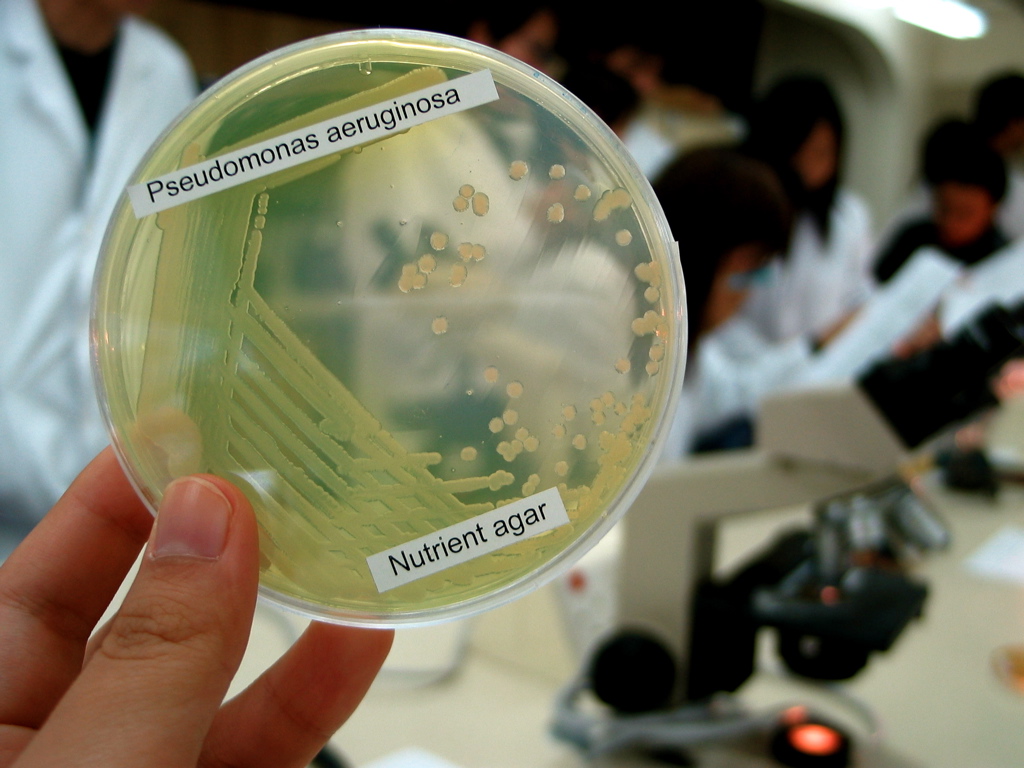|
Jena Microbial Resource Collection
The Jena Microbial Resource Collection (JMRC) is a joint collection of the Leibniz Institute for Natural Product Research and Infection Biology – Hans-Knöll-Institute and the University of Jena. It was founded in October 2010 by merging two earlier collections from the two above-mentioned institutes. It is a research institution, which is not normally open to the public. With about 15,000 fungus, fungal and about 35,000 bacterial living isolates, it is the largest collection of this kind in Germany. The microorganisms are maintained as active cultures, with some of them in cryopreservation. Aim of the collection The collection is aimed at the conservation of microbial resources for natural product screening. It is also aimed at research on pathogenicity mechanisms of fungal causative agents of a variety of mycoses in animals and humans. The head of the JMRC is Dr. Kerstin Voigt. Examples of microbial species in the collection * ''Lichtheimia corymbifera'', an ancient hum ... [...More Info...] [...Related Items...] OR: [Wikipedia] [Google] [Baidu] |
University Of Jena
The University of Jena, officially the Friedrich Schiller University Jena (, abbreviated FSU, shortened form ''Uni Jena''), is a public research university located in Jena, Thuringia, Germany. The university was established in 1558 and is counted among the ten oldest universities in Germany. It is affiliated with six Nobel Prize winners, most recently in 2000 when Jena graduate Herbert Kroemer won the Nobel Prize for physics. It was renamed after the poet Friedrich Schiller who was teaching as professor of philosophy when Jena attracted some of the most influential minds at the turn of the 19th century. With Karl Leonhard Reinhold, Johann Gottlieb Fichte, G. W. F. Hegel, F. W. J. Schelling and Friedrich Schlegel on its teaching staff, the university was at the centre of the emergence of German idealism and early Romanticism. , the university has around 19,000 students enrolled and 375 professors. Its current president, Walter Rosenthal, has held the role since 2014. Hi ... [...More Info...] [...Related Items...] OR: [Wikipedia] [Google] [Baidu] |
Conidiobolus Coronatus
''Conidiobolus coronatus'' is a saprotrophic fungus, first described by Costantin in 1897 as ''Boudierella coronata''. Though this fungus has also been known by the name ''Entomophthora coronata'', the correct name is ''Conidiobolus coronatus''. ''C. coronatus'' is able to infect humans and animals, and the first human infection with ''C. coronatus'' was reported in Jamaica in 1965. Taxonomy Originally, ''C. coronatus'' was considered to be a part of the genus ''Boudierella'', however it was later transferred to the genus ''Conidiobolus'' by Saccardo and Sydow. The fungus was also treated in the genus '' Entomophthora'', and the name ''Entomophthora coronata'' remains a widely used synonym. Another synonym attributed to ''C. coronatus'' is ''Conidiobolus villosus'' by G.W. Martin in 1925 due to the characteristic presence of villi. Growth and morphology ''Conidiobolus coronatus'' produces rapidly growing colonies that appear fuzzy and are flat. In their early stages, the colonie ... [...More Info...] [...Related Items...] OR: [Wikipedia] [Google] [Baidu] |
Pseudomonas Aeruginosa
''Pseudomonas aeruginosa'' is a common Bacterial capsule, encapsulated, Gram-negative bacteria, Gram-negative, Aerobic organism, aerobic–facultative anaerobe, facultatively anaerobic, Bacillus (shape), rod-shaped bacteria, bacterium that can cause disease in plants and animals, including humans. A species of considerable medical importance, ''P. aeruginosa'' is a multiple drug resistance, multidrug resistant pathogen recognized for its ubiquity, its Intrinsic and extrinsic properties, intrinsically advanced antibiotic resistance mechanisms, and its association with serious illnesses – hospital-acquired infections such as ventilator-associated pneumonia and various sepsis syndromes. ''P. aeruginosa'' is able to selectively inhibit various antibiotics from penetrating its outer membrane'' ''– and has high resistance to several antibiotics. According to the World Health Organization ''P. aeruginosa'' poses one of the greatest threats to humans in terms of an ... [...More Info...] [...Related Items...] OR: [Wikipedia] [Google] [Baidu] |
Streptomyces
''Streptomyces'', from στρεπτός (''streptós''), meaning "twisted", and μύκης (''múkés''), meaning "fungus", is the largest genus of Actinomycetota, and the type genus of the family Streptomycetaceae. Over 700 species of ''Streptomyces'' bacteria have been described. As with the other Actinomycetota, streptomycetes are gram-positive, and have very large genomes with high GC content. Found predominantly in soil and decaying vegetation, most streptomycetes produce spores, and are noted for their distinct "earthy" odor that results from production of a volatile metabolite, geosmin. Different strains of the same species may colonize very diverse environments. Streptomycetes are characterised by a complex secondary metabolism. Between 5-23% (average: 12%) of the protein-coding genes of each ''Streptomyces'' species are implicated in secondary metabolism. Streptomycetes produce over two-thirds of the clinically useful antibiotics of natural origin (e.g., neomy ... [...More Info...] [...Related Items...] OR: [Wikipedia] [Google] [Baidu] |
Gilbertella Persicaria
Gilbertella persicaria is a plant pathogen. References External links Index FungorumUSDA ARS Fungal Database Zygomycota Fungal plant pathogens and diseases Fungi described in 1925 Fungus species {{fungus-plant-disease-stub ... [...More Info...] [...Related Items...] OR: [Wikipedia] [Google] [Baidu] |
Pathogen
In biology, a pathogen (, "suffering", "passion" and , "producer of"), in the oldest and broadest sense, is any organism or agent that can produce disease. A pathogen may also be referred to as an infectious agent, or simply a Germ theory of disease, germ. The term ''pathogen'' came into use in the 1880s. Typically, the term ''pathogen'' is used to describe an ''infectious'' microorganism or agent, such as a virus, bacterium, protozoan, prion, viroid, or fungus. Small animals, such as helminths and insects, can also cause or Transmission (medicine), transmit disease. However, these animals are usually referred to as parasites rather than pathogens. The scientific study of microscopic organisms, including microscopic pathogenic organisms, is called microbiology, while parasitology refers to the scientific study of parasites and the organisms that host them. There are several pathways through which pathogens can invade a host. The principal pathways have different episodic time ... [...More Info...] [...Related Items...] OR: [Wikipedia] [Google] [Baidu] |
Plant
Plants are the eukaryotes that form the Kingdom (biology), kingdom Plantae; they are predominantly Photosynthesis, photosynthetic. This means that they obtain their energy from sunlight, using chloroplasts derived from endosymbiosis with cyanobacteria to produce sugars from carbon dioxide and water, using the green pigment chlorophyll. Exceptions are parasitic plants that have lost the genes for chlorophyll and photosynthesis, and obtain their energy from other plants or fungi. Most plants are multicellular organism, multicellular, except for some green algae. Historically, as in Aristotle's biology, the plant kingdom encompassed all living things that were not animals, and included algae and fungi. Definitions have narrowed since then; current definitions exclude fungi and some of the algae. By the definition used in this article, plants form the clade Viridiplantae (green plants), which consists of the green algae and the embryophytes or land plants (hornworts, liverworts ... [...More Info...] [...Related Items...] OR: [Wikipedia] [Google] [Baidu] |
Food Spoilage
Food spoilage is the process whereby food becomes unsuitable to ingest by a person; it is a matter of food safety. Bacteria and various fungi are the causes of spoilage, and can create serious consequences for consumers, but there are preventive measures that can be taken. The precise cause of the process is due to many outside factors as a side-effect of the type of product it is, as well as how the product is packaged and stored. Food spoilage is the reason for food preservation, to extend shelf life. Processed meat, Meat is processed, Frozen food, food is frozen, and Canning, food is canned. Due to spoilage, one-third of the world's food produced for human consumption is lost every year. Bacteria Some bacteria are responsible for the spoilage of food. When bacteria breaks down the food, acids and other waste products are generated in the process. While the bacteria itself may or may not be harmful, the waste products may be unpleasant to taste or may even be harmful to one's ... [...More Info...] [...Related Items...] OR: [Wikipedia] [Google] [Baidu] |
Mold (fungus)
A mold () or mould () is one of the structures that certain fungi can form. The dust-like, colored appearance of molds is due to the formation of spores containing fungal secondary metabolites. The spores are the dispersal units of the fungi. Not all fungi form molds. Some fungi form mushrooms; others grow as single cells and are called microfungi (for example yeasts). A large and taxonomically diverse number of fungal species form molds. The growth of hyphae results in discoloration and a fuzzy appearance, especially on food. The network of these tubular branching hyphae, called a mycelium, is considered a single organism. The hyphae are generally transparent, so the mycelium appears like very fine, fluffy white threads over the surface. Cross-walls (septa) may delimit connected compartments along the hyphae, each containing one or multiple, genetically identical nuclei. The dusty texture of many molds is caused by profuse production of asexual spores (conidia) form ... [...More Info...] [...Related Items...] OR: [Wikipedia] [Google] [Baidu] |
Absidia Glauca
''Absidia glauca'' is a species of fungus belonging to the family Cunninghamellaceae. It has cosmopolitan distribution In biogeography, a cosmopolitan distribution is the range of a taxon that extends across most or all of the surface of the Earth, in appropriate habitats; most cosmopolitan species are known to be highly adaptable to a range of climatic and en .... References Mucoraceae Fungus species {{fungus-stub ... [...More Info...] [...Related Items...] OR: [Wikipedia] [Google] [Baidu] |
Mucorales
The Mucorales is the largest and best-studied order of zygomycete fungi. Members of this order are sometimes called pin molds. The term mucormycosis is now preferred for infections caused by molds belonging to the order Mucorales. Systematics The order includes: 11 families, 56 genera, and approximately 300 species. Mucoralean classification has traditionally been based on morphological, developmental, and ecological characteristics. Recently, molecular data has revealed that some aspects of traditional classification are quite artificial. For example, the Mucoraceae is believed to be polyphyletic, as are the Thamnidiaceae, Chaetocladiaceae and Radiomycetaceae. Some of the genera, (including '' Mucor'', ''Absidia'' and '' Backusella'') appear to be polyphyletic. Today, the traditional system is still largely in use, as further studies are needed to reconcile morphological and molecular concepts of families and genera. Families The order consists of the following fa ... [...More Info...] [...Related Items...] OR: [Wikipedia] [Google] [Baidu] |




